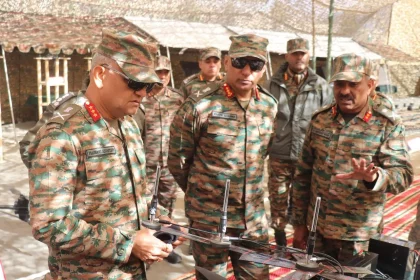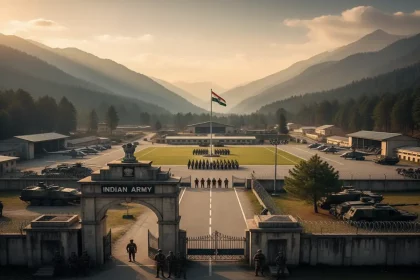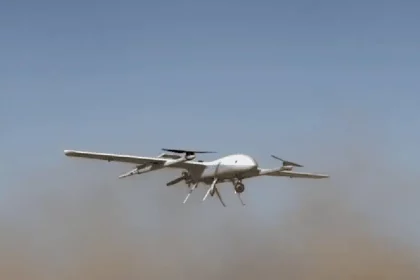Lt Gen Pratik Sharma Reviewes Advanced Drone Warfare Capabilities
Lt Gen Pratik Sharma Reviews Northern Command’s Drone Warfare Preparedness and Technological Advancements.
New Military Base in Assam Strengthens India’s Border Security and Intelligence Capabilities
New Lachit Borphukan Military Station near Bangladesh border to enhance surveillance, intelligence, and rapid deployment in Assam’s sensitive Dhubri district.
Kalyani Strategic Systems Bags ₹250-Crore MoD Contracts to Boost India’s Maritime Defence Capabilities
Kalyani Strategic Systems’ ₹250-Crore MoD Deal Strengthens India’s Underwater Defence and Maritime Self-Reliance.
Rudra-7 FPV Drone Successfully Completes High-Altitude Trials at 21,000 ft in Leh, Earning Army Commendation
Rudra-7’s 21,000-ft Triumph: Indigenous FPV Drone Earns Army Recognition for High-Altitude Excellence.
Nyoma Airbase Commissioned as World’s Highest Fighter Base at 13,700 ft, Boosting India’s Strategic Reach in Ladakh
Nyoma Airbase: India’s New High-Altitude Power Centre Strengthening Air Dominance Along the LAC.
Paras Defence Secures ₹35.68 Crore MoD Contracts for Indigenous Counter-Drone Systems
Paras Defence Secures ₹39.63 Crore MoD Contracts to Strengthen India’s Anti-Drone Capabilities.






